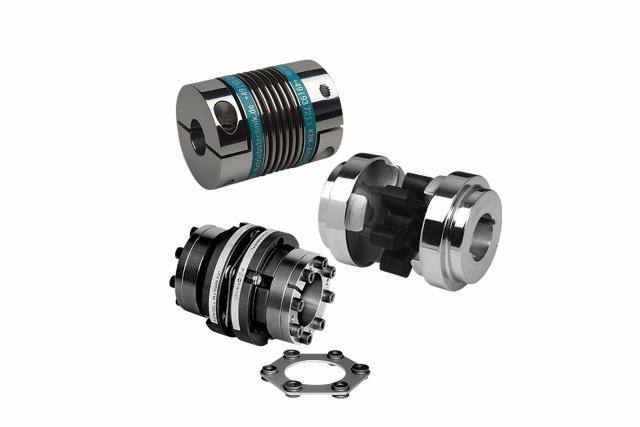Information about shaft couplings
We supply a wide range of couplings from leading suppliers including Vulkan, KBK, ESCO, HUCO, Flender, Compomac and Ortlinghaus.
What is a shaft coupling and why do you use them?
A shaft coupling is a connection that connects two shafts and transmits torque between them. Shaft couplings are used to compensate for inaccuracies in shaft alignment (flexible shaft couplings) as well as dampen shocks and vibrations (elastic shaft couplings).
Where are shaft couplings used?
Shaft couplings are used, as the name indicates, in places where you want to transfer torque from one shaft to another. In industry applications shaft couplings are used in a multitude of machines and applications. They are often found between electric motors and pumps or gear motors to name a few examples.
Types of shaft couplings
There are some characteristics that you should be aware of.
Flexible / Not flexible
A shaft coupling is said to be flexible when it can compensate for inaccuracies in shaft alignment. Most shaft couplings are flexible.
Elastic / Torsional rigid
Couplings that have a rubber or PU element involved will be elastic and able to dampen unwanted shocks and vibrations. where torsionally rigid couplings will transfer rotation directly and without time delay.
Service-free / Service-friendly
Often the amount of the work required to straighten the shaft is high compared to the value of the coupling. It is therefore desirable that the shaft alignment is not compromised when servicing the coupling. Some couplings are designed in such a way that wearing parts can be changed without affecting the shaft alignment. We call them service-friendly.
Some couplings have no wear parts at all, and therefore do not need to be serviced, these are called service-free.
Single or double
Double cardanic couplings have the advantage that a radial inaccuracy in the shaft alignment is converted into two angular misalignments. This is much easier to work with both for the coupling itself and for the bearings that hold the shafts.
Failsafe / not failsafe
Failsafe means that eventual errors in the coupling do not cause unnecessary damage. A coupling with failsafe will automatically compensates in the event of a fault, which means that a twist and ultimately unnecessary damage does not occur.
Failsafe means that the coupling maintains its grip even when the coupling fails – e.g. if the rubber element is damaged and disappears. This is important e.g. in lifting applications.
Backlash free
Backlash normally occurs in couplings, but is unfortunate in motion-control applications. By choosing a backlash free coupling, you gain full control over positioning.
In reversing, pulsating or strongly impacting operation, backlash is also unfortunate, as the backlash will only get worse over time, because the mass accelerates freely across a backlash.
Materials
We supply couplings made of cast iron, steel and aluminium.
What is important when choosing a coupling?
There are some important parameters when choosing a coupling for your application.
Typically, the torque to be transmitted is an important parameter. The torque can be calculated by this formula:
9550 x KW
M2 = ——————- [Nm]
RPM
Example
M2 = (7.5 kW x 9550) / 1450 rpm = 49.4 Nm
Bore (=shaft thickness)
Physical dimensions (is there room for the coupling?)
Characteristics
Shaft assembly
Distance between shaft ends (DBSE) (can the coupling make the ends meet?)
Speed, RPM (Cast iron max 30 m/sec. Steel max 80 m/sec.)
Need help?
If you do not find the right coupling for your next application, or if you need guidance on couplings or help with calculations, you are always welcome to contact us.
Go to shaft couplings

